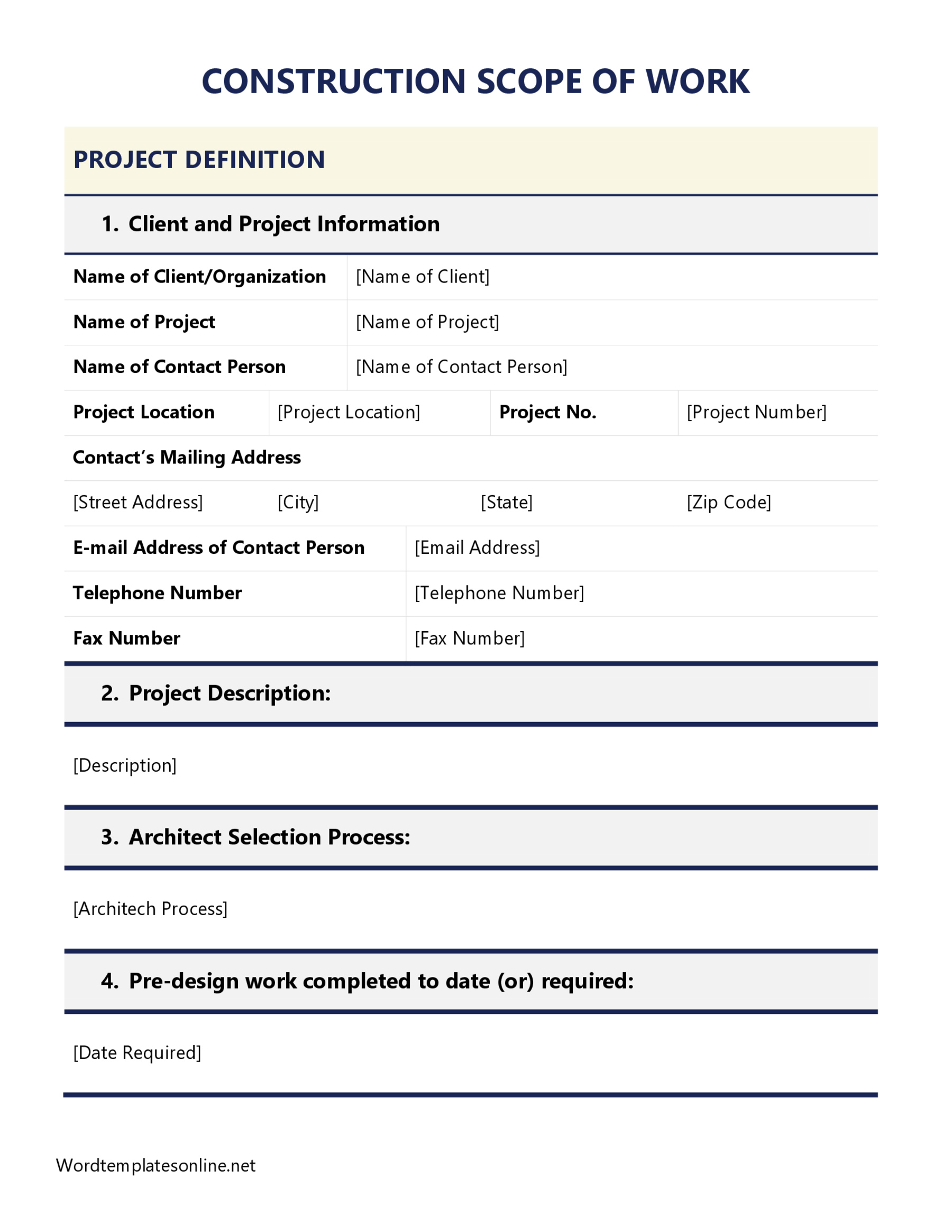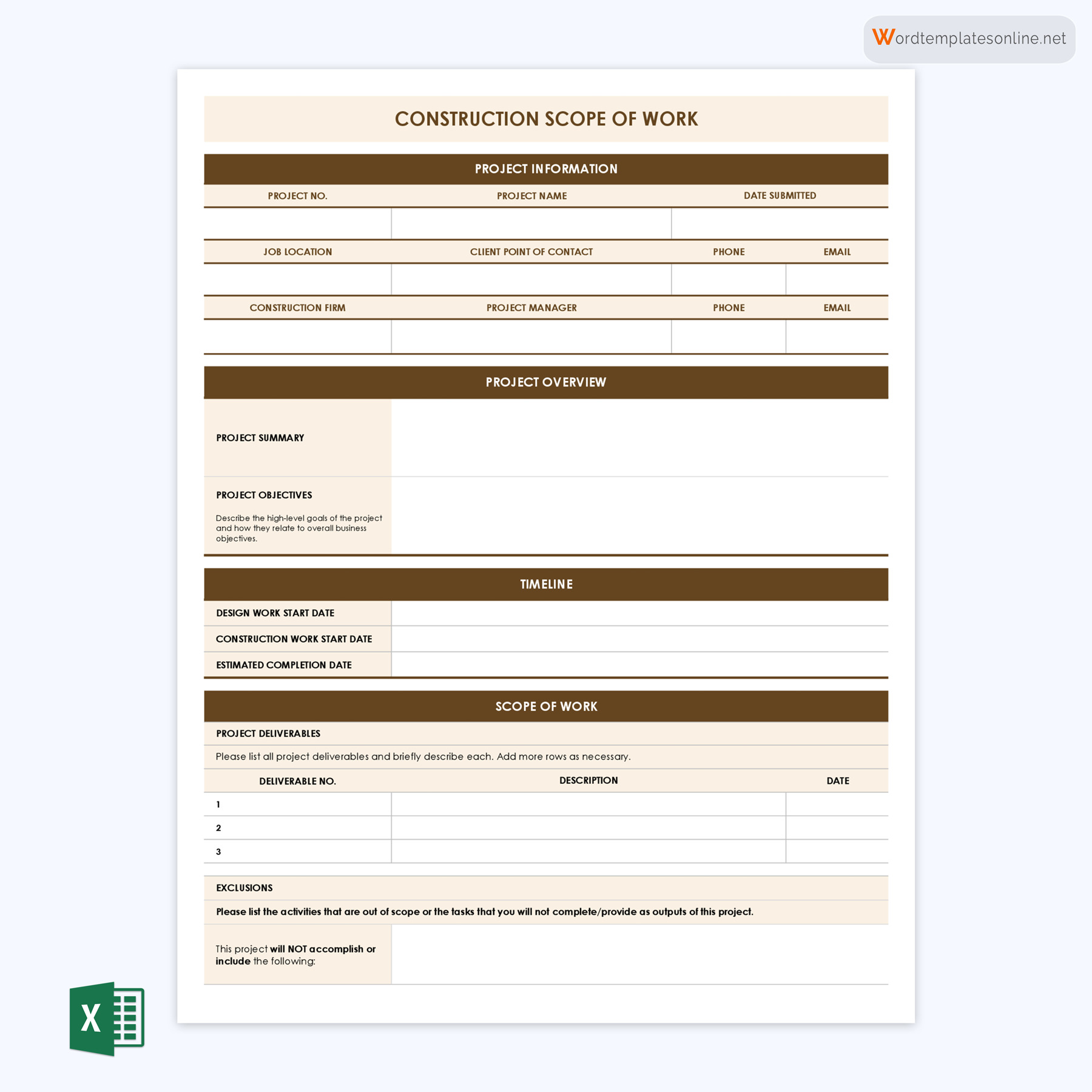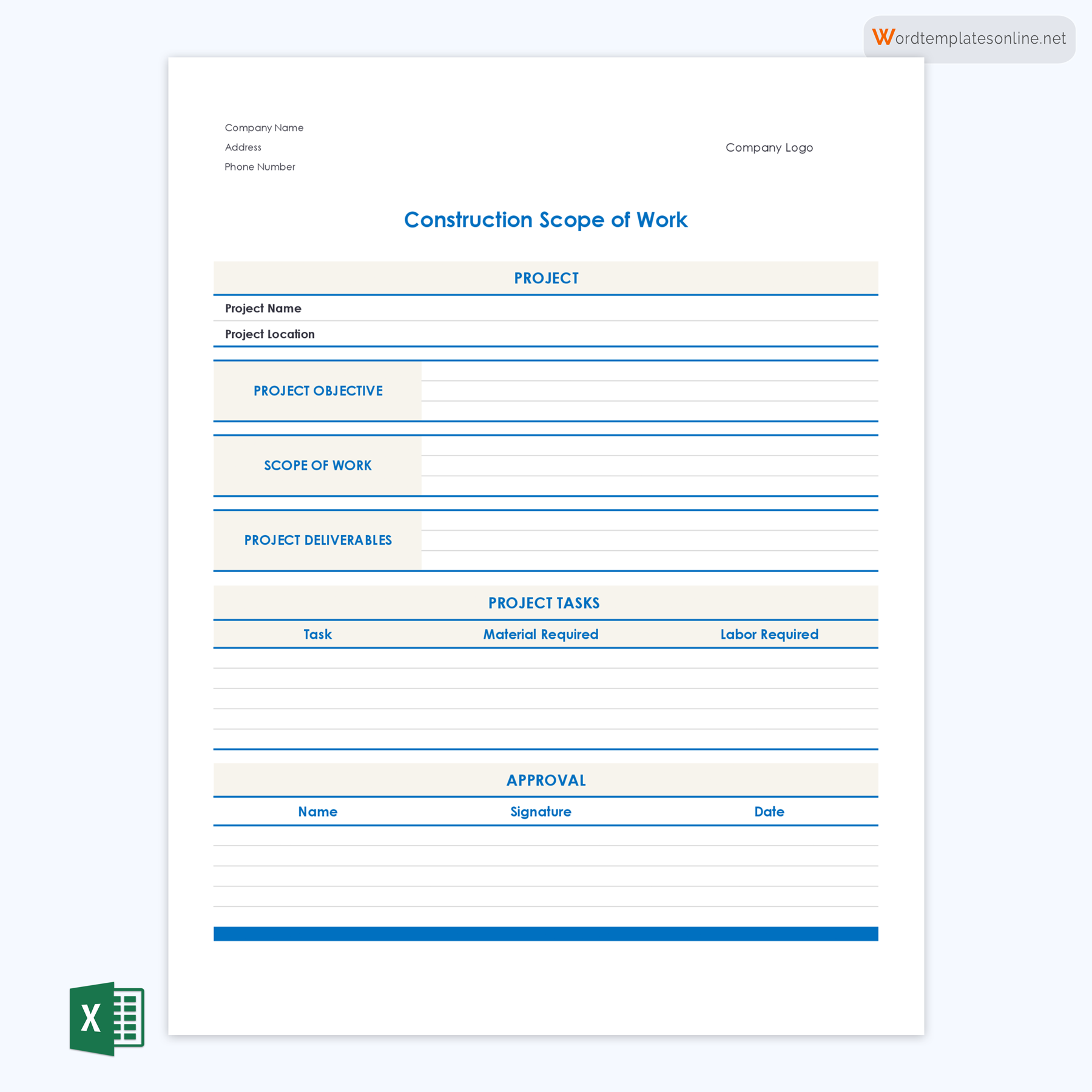When undertaking a construction project, whether you are a seasoned contractor, project owner, engineer, or architect, you need a roadmap for the entire journey. You must also ensure that all parties involved are on the same page. This is why a construction scope of work (SOW) becomes necessary. It is a meticulously crafted document that directs all stakeholders toward the common goal.
You can use a template with placeholders for the project’s objectives, scope, and specifications to create the SOW. It provides a structured roadmap, facilitating a successful project execution while minimizing confusion, delays, and potential conflicts. Thus, it offers direction to ensure projects are completed seamlessly, and expectations and deadlines are met. Consequently, a well-defined SOW can be interpreted as the foundation of project success. This is because it assists you in navigating the complexities of the project and delivering outcomes that align with the initial vision.
This article educates you on how a template for creating a scope of work acts as a roadmap for construction projects. It achieves this by unraveling its components, significance, and exploring the best practices for utilizing such a document. Also, you can access the free and simple MS Excel templates we have provided for your convenience when crafting effective SOW for construction projects.
Free Templates






What is a Construction Scope of Work Template?
A construction scope of work (SOW) template is a structured and standardized document that outlines the scope, specific objectives, deliverables, requirements, and other parameters that govern a construction project.
As a result, it has placeholders for the project overview, goals, deliverables, timeline, resources, estimated budget, benchmarks of quality, etc. The template can be used for construction as well as demolition projects. It is also applicable to both residential and commercial sites.
The primary purpose of this document is to provide a clear and comprehensive understanding of what the project entails. It also outlines what is expected from you and the parties involved throughout the construction lifecycle. Such parties include project owners, architects, engineers, and contractors.
By aligning the perspectives of these parties/stakeholders, the template prevents potential disputes by minimizing confusion and aligning expectations. This, in turn, promotes teamwork during project execution. While templates offer a standardized format, they can be customized to befit the unique requirements of each construction project.
Key Components of a Construction Scope of Work Template
Each component of the template plays a crucial role in crafting a comprehensive and well-structured scope of work for a construction project. Together, the components provide the framework for an effective SOW that facilitates the success of the project.
Here are the fundamental components of such a template:
Project overview
The project overview sets the stage by introducing the construction endeavor. It provides a succinct snapshot of the project’s purpose, stakeholders involved, anticipated end result, and a brief description of its role in the larger context. This section serves as the gateway for readers to understand the context of the project and its broader goals to ensure everyone’s efforts are directed toward achieving these goals.
Project objectives and goals
Here, the specific objectives and goals of the project are outlined. These direct the entire construction process. Whether constructing a new building, renovating an existing structure, demolishing a building, or any other project, clearly articulating the objectives provides direction to all stakeholders.
Project milestones and deliverables
This segment of the template outlines the significant milestones and deliverables that mark the project’s progress. Milestones represent critical checkpoints, while deliverables are the tangible outcomes produced at various stages. Defining these points makes it easy to track progress. It also ensures transparency, accountability, and a clear understanding of what to expect at each stage of the project life cycle.
Scope and technical details
In this template section, you describe what the project entails or does not entail. It is an in-depth breakdown of all the tasks, activities, materials, equipment, resources, and technical aspects or specifications required for successful project completion. You should describe the scope and technical details for each phase of the project.
Every element is described from foundation to finishing touches, ensuring that no aspect is overlooked or misunderstood. Consequently, this promotes effective planning and coordination to ensure that resources are available at each stage when needed. It also ensures the team performs only the required tasks and is up to the required standards, thus reducing delays and promoting efficiency and overall productivity.
Time and schedule
The project’s timeline and schedule encompass the estimated start and finish dates for the overall project and different project phases/milestones and deliverables. By setting realistic timelines, all parties involved can prepare adequately and allocate their resources accordingly to ensure smooth project progression. Proper time management also prevents delays, thus ensuring the project is completed successfully within the assigned time frame.
Budget and resources
This component documents the budget and required resources for the entire project. The budget outlines the financial implications of the materials, equipment, and personnel. For personnel, consider the type and quantity of each category, including contractors, project managers, and skilled workforce.
To effectively complete the budget and resources section, you should have estimates of the cost of each task or deliverable documented in the scope of the project. This component is a financial framework that dictates how much amount will be spent at each phase. Clarity about financial and resource allocation is essential for preventing overspending and maintaining an accurate plan.
Payment schedule
This part delineates the agreed-upon payment structure. It specifies when payments will be made and what they will cover – whether it is project milestones, specific deliverables, or other project-related criteria. Establishing a clear payment schedule signifies transparency and trust between you and the client, thus promoting smooth financial disbursement and compensation.
Key project stakeholders
Identifying the key project stakeholders in the template is critical for effective communication and decision-making. This section outlines the roles and duties of each stakeholder, such as the client, contractor, project manager, and any other parties involved. Clarifying the individuals, teams, and entities involved also enhances coordination and collaboration, increasing productivity and efficiency in task completion.
Quality standards and expectations
Here, you define the desired quality standards. From construction materials, workmanship, and regulatory compliance to safety protocols, this component defines the level or standards of excellence and delivery expected in the project’s execution. This ensures that the final outcome meets or exceeds the agreed-upon quality benchmarks. It also promotes consistent and reliable outcomes at each stage of the project’s lifecycle.
Communication plan
A successful project thrives on effective communication. This section defines how communication will flow between you and other stakeholders. It outlines the frequency of updates, preferred communication methods (e.g., phone calls, emails, meetings, etc.), and who the main points of contact are for different aspects of the project.
Signatures
The signatures component of the template provides formal acknowledgment and commitment to the terms laid out in the scope of work. It will have placeholders for all the authorized signatures. Typically, these will be the signatures of the key individuals in the project, including project managers, clients, and contractors. This component of the document signifies their agreement to the outlined project’s details. Consequently, this adds a degree of legal and professional validity to the SOW.
Tips for Personalizing the Template to Align with Your Project’s Specifics
It is advisable to set aside enough time to tailor the template you select to use as you deem necessary. Personalizing it ensures that it accurately reflects the specifics of your project and thus enhances its effectiveness in guiding your project to success.
Here are some tips to help you tailor the template to your project’s unique requirements:
Understand your project’s uniqueness
Before completing the template, begin by thoroughly comprehending the distinct characteristics of your project. Every construction endeavor is unique, from its objectives, features, and challenges to the applicable industry-specific standards. By grasping these intricacies, you can determine which template components need to be emphasized, modified, or expanded upon.
Review and customize the components
Go through each component of the template and evaluate its relevance to your project. Some elements require more emphasis, while others could be modified. For instance, adjust the scope and deliverables to match your project scale and the timeline component to align with your project duration. Ensure each component aligns with your project-specific characteristics.
Maintain flexibility
While templates provide structure, they should not restrict adaptability. Construction projects often evolve, and your SOW should be able to accommodate such potential changes. Establish mechanisms that allow you to adjust a component of the document without invalidating or modifying other components and derailing the overall plan. For example, make sure the language used allows for modifications without compromising the document’s clarity.
Seek review and validation
Before finalizing your customized template, seek input from relevant stakeholders. This could include project managers, owners, engineers, legal advisors, team members, and others, such as external consultants who bring valuable insights. Their feedback can help identify potential gaps or inaccuracies and ensure that the customized template aligns with the project’s objectives and client expectations.
Key Takeaways
- A construction SoW goes beyond mere formality; it serves as a roadmap for construction projects, aligning all stakeholders toward a common goal and minimizing confusion.
- A template streamlines the creation of a detailed SOW, offering placeholders for project objectives, scope, specifications, timeline, budget, payment schedule, key project stakeholders, quality standards and expectations, communication plan, and signatures.
- This multifaceted document sets the stage for effective resource allocation, streamlined scheduling, and structured communication and decision-making throughout the project’s lifecycle.
- Personalizing a template involves understanding your project’s uniqueness, reviewing and customizing components, maintaining flexibility for potential changes, and seeking validation from relevant stakeholders.
- Utilizing a simple document tailored to your project enhances clarity, reduces disputes, and promotes collaboration, ultimately leading to a successful construction project.
- You can utilize free templates available online to streamline the SOW creation process.




